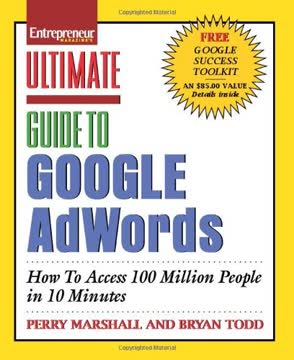Key Takeaways
1. Facebook's Evolution: From Dorm Room to Global Phenomenon
"Facebook was founded in Mark Zuckerberg's Harvard University dorm room by Mark, his roommates, and friends. It was not built for you, the advertiser."
The accidental advertising giant. Facebook's journey from a college networking site to a global advertising powerhouse was unintentional but revolutionary. Starting as a platform for connecting students, it rapidly expanded to universities worldwide, then to the general public. This organic growth created a vast pool of user data, making Facebook an inadvertent goldmine for advertisers.
A new advertising paradigm. Unlike traditional search engines, Facebook's advertising model is built on user identity, interests, and social connections rather than search intent. This shift allows for unprecedented targeting precision, enabling advertisers to reach specific demographics, psychographics, and social groups. The platform's focus on user experience and engagement inadvertently created a unique environment for advertisers to connect with potential customers in more personal and relevant ways.
2. The Power of Targeting: Precision in Facebook Advertising
"Targeting every person in the world—Group 1—may lead to some local sales. However, the cost to advertise to everyone in the world will probably bankrupt you."
Laser-focused marketing. Facebook's targeting capabilities allow advertisers to narrow their audience with remarkable precision. This includes:
- Geographic targeting (country, state, city)
- Demographic targeting (age, gender, relationship status)
- Psychographic targeting (interests, activities, opinions)
- Sociographic targeting (connections, friends of fans)
Cost-effective reach. By focusing on specific, relevant audiences, advertisers can dramatically reduce costs and increase effectiveness. For example, a local business can target married women aged 25-50 within a 10-mile radius who are interested in their product category. This precision ensures that ad spend is directed towards the most likely potential customers, maximizing return on investment.
3. Crafting Compelling Ads: Images, Copy, and Psychological Triggers
"Perhaps 80% of the click-effectiveness of your ad will be determined by the image you choose and the headline you provide for that image, with 70% coming from the image alone."
Visual impact is paramount. In the fast-scrolling world of Facebook, images are the primary attention-grabbers. Effective images should:
- Be relevant to your product or service
- Evoke emotion or curiosity
- Feature people looking directly at the camera
- Use contrasting colors to stand out
Compelling copy complements visuals. While images catch the eye, copy seals the deal. Effective ad copy should:
- Include a clear call-to-action
- Use power words that trigger emotional responses
- Speak directly to the target audience's needs or desires
- Be concise and easily scannable
Psychological triggers enhance engagement. Incorporating psychological principles can significantly boost ad performance. These include:
- Social proof (showing likes, comments, shares)
- Scarcity (limited time offers)
- Authority (expert endorsements)
- Reciprocity (offering value before asking for action)
4. Mastering Facebook's Bidding Strategies: CPC vs. CPM
"CPM bidding can be magical."
Understanding bidding options. Facebook offers two primary bidding strategies:
- Cost Per Click (CPC): You pay when someone clicks your ad
- Cost Per Mille (CPM): You pay for every 1,000 impressions
CPC for testing, CPM for scaling. CPC bidding is generally safer for new advertisers and when testing new ads. It ensures you only pay for actual clicks. However, CPM can be more cost-effective for ads with high click-through rates (CTR) and when scaling successful campaigns.
Bidding strategies for success:
- Start with CPC to test ad performance
- Monitor CTR closely
- Switch to CPM for ads with CTR above 0.5-1%
- Continuously adjust bids based on performance
- Use Facebook's auto-bidding features cautiously
5. Landing Pages: The Gateway to Conversion
"If you paid a dollar for a click and you lose your prospects in the first 15 seconds, you just paid $240 per hour to fail to engage the people who clicked on your ads."
First impressions matter. Your landing page is the crucial link between ad click and conversion. Key elements of an effective landing page include:
- Clear, compelling headline that matches the ad
- Concise, benefit-focused copy
- Strong call-to-action
- Visually appealing design
- Social proof (testimonials, trust badges)
- Minimal distractions (no navigation menu)
Optimize for Facebook users. Facebook users are often in a casual browsing mindset. To accommodate this:
- Keep forms short and simple
- Offer a "soft" conversion (e.g., newsletter signup) as an alternative to immediate purchase
- Use Facebook-specific elements like social plugins to increase trust and engagement
Test and iterate. Continuously A/B test different landing page elements to improve conversion rates. Small changes can lead to significant improvements in overall campaign performance.
6. Leveraging Facebook Pages and "Likes" for Business Growth
"If you scored an 8 or higher on the 'Is Facebook for Me' test, then you should be able to get high CTRs. You should work hard to get CPM working because you will likely save a lot of money over time."
Building your Facebook presence. A Facebook Page is essential for businesses looking to leverage the platform's full potential. It provides:
- A hub for customer engagement
- A platform for sharing content and updates
- A source of social proof through likes and reviews
- Access to valuable audience insights
The power of "Likes". Accumulating Page likes is more than just vanity metrics:
- It builds social credibility
- Enables highly targeted, low-cost advertising to fans
- Facilitates viral marketing through friends of fans
- Provides a foundation for remarketing campaigns
Strategies for growing your fan base:
- Run targeted like campaigns
- Create and share engaging, shareable content
- Use Facebook plugins on your website
- Leverage Facebook events and groups
- Encourage customers to check in and leave reviews
7. Harnessing the Social Graph: Facebook Connect and Beyond
"Facebook Connect accomplished very quickly and quietly what other larger corporations have been trying to do for years—provide users with a single user name and password to log into millions and millions of websites."
Extending Facebook's reach. Facebook Connect allows websites to integrate Facebook's social features, providing:
- Easy user authentication
- Access to user data (with permission)
- Social sharing capabilities
- Personalized user experiences
Benefits for businesses:
- Simplified user registration and login
- Increased user engagement through social features
- Access to valuable user data for personalization
- Enhanced viral marketing potential
Implementation considerations:
- Respect user privacy and data protection regulations
- Clearly communicate what data you're accessing and how it will be used
- Offer alternative login options for non-Facebook users
- Use Facebook data to enhance, not replace, your own customer relationships
8. The Art of Engaging Content: Status Updates and Events
"Your ad that fatigued didn't fail. It was an amazing success. It is just time to move on to another topic."
Content is king on Facebook. Regular, engaging status updates are crucial for maintaining audience interest and reaching news feeds. Effective strategies include:
- Asking questions to encourage comments
- Sharing behind-the-scenes content
- Posting timely, relevant industry news
- Using a mix of text, images, and videos
- Leveraging user-generated content
Events: The antidote to ad fatigue. Facebook Events offer a powerful way to re-engage your audience and combat ad fatigue:
- Create events for product launches, sales, or webinars
- Use event-specific ads to reach targeted audiences
- Leverage the natural urgency of events to drive action
- Encourage attendees to invite friends, expanding your reach
Balancing promotion and value. Aim for an 80/20 mix of valuable content to promotional posts. This keeps your audience engaged while still driving business objectives.
9. Testing and Optimization: The Key to Sustained Success
"Make your ads fight to the death, like gladiators in the Facebook Colosseum."
Continuous improvement through testing. Successful Facebook advertising requires ongoing testing and optimization:
- A/B test ad elements (images, headlines, copy, targeting)
- Test different ad formats (single image, carousel, video)
- Experiment with various bidding strategies
- Try different landing page designs and copy
Data-driven decision making. Leverage Facebook's analytics and reporting tools to inform your optimization efforts:
- Monitor key metrics (CTR, conversion rate, cost per conversion)
- Analyze audience insights to refine targeting
- Use the Facebook Pixel to track off-platform conversions
- Regularly review and adjust campaigns based on performance data
Embracing the iterative process. Success on Facebook is rarely immediate. Be prepared to:
- Start with small budgets and scale gradually
- Kill underperforming ads quickly
- Continuously introduce new ad variations
- Stay updated on platform changes and best practices
10. Building a Robust, Long-Term Internet Business
"Build a presence over time that's difficult or impossible to knock off. Any business that can be replicated with 'cut and paste' is the online equivalent of a shantytown."
Creating lasting value. To build a sustainable online business:
- Develop unique products or services
- Create original, high-quality content
- Build and nurture your own audience (email lists, social media followers)
- Invest in your brand and reputation
Diversification is key. Don't rely solely on Facebook or any single platform:
- Develop multiple traffic sources
- Build your own website and email list
- Explore various marketing channels (SEO, content marketing, influencer partnerships)
Ethical practices for long-term success:
- Prioritize customer value over short-term gains
- Be transparent in your marketing claims
- Focus on building genuine relationships with your audience
- Continuously improve your products and services based on feedback
By focusing on these principles, you can leverage Facebook's powerful advertising platform while building a robust, adaptable business that can withstand platform changes and market shifts.
Last updated:
FAQ
What's Ultimate Guide to Facebook Advertising about?
- Focus on Paid Advertising: The book emphasizes leveraging Facebook's vast user base through paid advertising, contrasting it with traditional social marketing methods.
- Targeting Strategies: It covers geographic, demographic, psychographic, and sociographic targeting to help advertisers effectively reach their ideal audience.
- Practical Steps: Provides practical steps for creating ads, managing campaigns, and analyzing performance, making it suitable for both beginners and experienced marketers.
Why should I read Ultimate Guide to Facebook Advertising?
- Expert Insights: Authored by Perry Marshall, a recognized expert in online advertising, offering valuable insights and strategies.
- Actionable Advice: Includes step-by-step instructions, making it easy to implement the strategies discussed.
- Stay Competitive: Understanding Facebook advertising is crucial for businesses to compete effectively in the digital marketplace.
What are the key takeaways of Ultimate Guide to Facebook Advertising?
- Importance of Targeting: Effective targeting is essential for reducing costs and increasing conversion rates, using Facebook's tools to reach specific audiences.
- Ad Creativity Matters: Highlights the significance of creative ad design, using compelling images and headlines to capture attention.
- Continuous Testing: Advocates for ongoing testing and optimization of ads to improve performance over time.
What are the best quotes from Ultimate Guide to Facebook Advertising and what do they mean?
- "Your mission is to buy a click for $1 and to turn it into $2.": Encapsulates the core goal of turning ad spend into profit through effective strategies.
- "Selling on the front porch is about engaging people where they are.": Emphasizes connecting with potential customers in a way that resonates with their interests.
- "Ads are not just about selling; they are about building relationships.": Highlights nurturing customer relationships through engaging content and interactions.
How does Ultimate Guide to Facebook Advertising define ad fatigue, and why is it important?
- Ad Fatigue Explained: Occurs when an audience becomes tired of seeing the same ad repeatedly, leading to decreased engagement.
- Signal for Change: Suggests viewing ad fatigue as a signal to refresh ad content, not as a failure.
- Strategies to Combat Fatigue: Offers strategies like rotating ads and creating new content to re-engage the audience.
What targeting strategies does Ultimate Guide to Facebook Advertising recommend?
- Geographic Targeting: Emphasizes targeting users based on location to reach local customers effectively.
- Demographic and Psychographic Targeting: Uses demographic information and psychographic data to refine audience targeting.
- Sociographic Targeting: Focuses on users' social connections, enabling advertisers to reach friends of existing customers.
How can I create compelling ad copy according to Ultimate Guide to Facebook Advertising?
- Engaging Headlines: Craft attention-grabbing headlines that pique interest and encourage clicks.
- Clear Call to Action: Include a clear and compelling call to action, guiding the audience on what to do next.
- Emotional Triggers: Use emotional triggers in ad copy to connect with the audience on a deeper level.
What is the significance of A/B testing in Ultimate Guide to Facebook Advertising?
- Optimize Ad Performance: Allows comparison of different ad versions to see which performs better, improving click-through and conversion rates.
- Data-Driven Decisions: Encourages decisions based on data rather than assumptions, ensuring effective marketing strategies.
- Continuous Learning: Fosters a culture of continuous learning and adaptation based on real-time feedback.
How does Facebook advertising differ from Google AdWords according to Ultimate Guide to Facebook Advertising?
- Different Mindsets: Facebook advertising focuses more on social engagement rather than direct search intent.
- Targeting Approach: Google targets users based on search queries, while Facebook uses interests and social connections for nuanced strategies.
- Ad Format and Interaction: Facebook ads blend into the social experience, requiring engaging content that resonates personally.
How can I create my first Facebook ad quickly as suggested in Ultimate Guide to Facebook Advertising?
- Step-by-Step Guide: Provides a quick guide to setting up your first ad in just 10 minutes, including account setup and ad creation.
- Design and Targeting: Emphasizes designing an eye-catching ad and selecting the right audience for maximum engagement.
- Budgeting Tips: Advises starting with a low budget and short campaign duration to minimize risk while testing effectiveness.
What role do Facebook events play in advertising strategies discussed in Ultimate Guide to Facebook Advertising?
- Engagement Opportunities: Provide a platform for businesses to engage with their audience interactively, allowing deeper connections.
- Combatting Ad Fatigue: Suggests using events to refresh marketing efforts and combat ad fatigue with new topics.
- Targeted Promotions: Events can be promoted to specific fans, ensuring the right audience is reached and encouraging participation.
How does Ultimate Guide to Facebook Advertising suggest measuring the success of Facebook advertising campaigns?
- Tracking Metrics: Recommends tracking key metrics like click-through rates, conversion rates, and cost per acquisition.
- Using Insights: Facebook’s analytics tools provide valuable insights into audience engagement and ad effectiveness.
- Continuous Improvement: Emphasizes using data to continuously improve campaigns, adjusting strategies based on audience behavior.
Review Summary
Ultimate Guide to Facebook Advertising receives mixed reviews, with an average rating of 4.04/5. Many praise its comprehensive coverage of Facebook advertising strategies, step-by-step guidance, and valuable insights. Readers appreciate the book's focus on finding the right audience and creating effective ads. However, some criticize it for being outdated, overly promotional of the author's services, and lacking in-depth analysis. The book is recommended for beginners but may be less useful for experienced advertisers. Overall, it's considered a solid resource for understanding Facebook advertising basics.
Similar Books

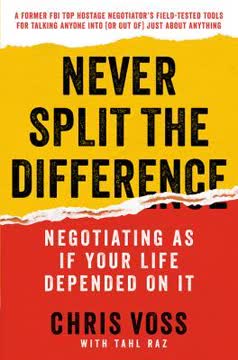
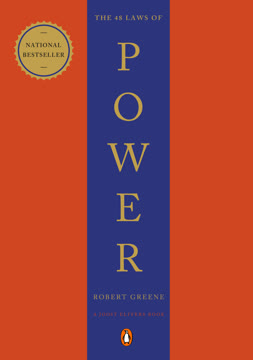
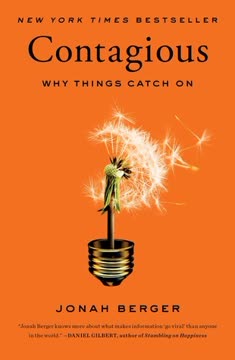




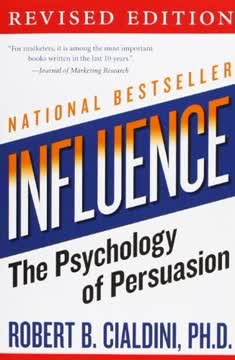

Download PDF
Download EPUB
.epub digital book format is ideal for reading ebooks on phones, tablets, and e-readers.


